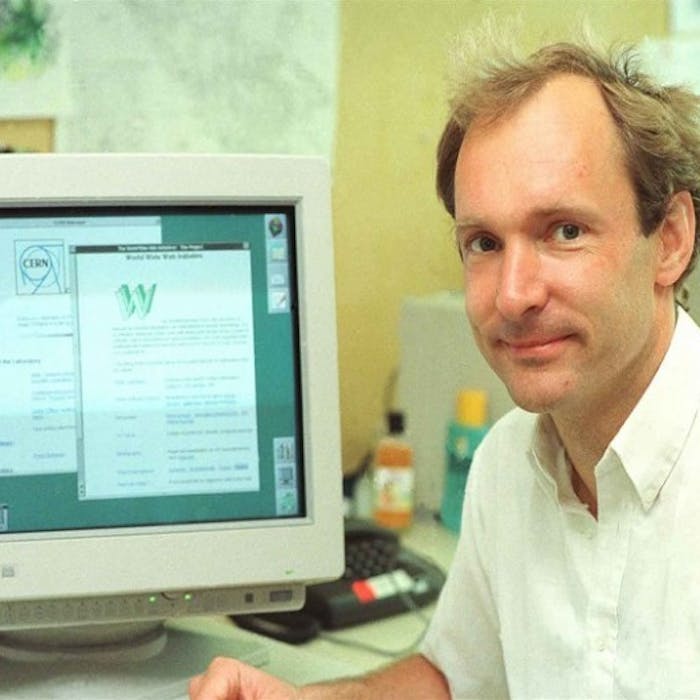
The World Wide Web - a Briton's free gift to the world
The World Wide Web is generally acknowledged to have been invented by British computer scientist Tim Berners-Lee (pictured) whilst working at CERN, the European particle physics laboratory in Geneva. He also created the first website.
Tim Berners-Lee was born in 1955. Both of his parents were computer scientists, working on the Ferranti Mark I, the first commercial computer. Berners-Lee studied Physics at Oxford University.
In 1984 he was working at CERN on the design of the laboratory’s computer network, developing procedures that allowed different computers to communicate with one another and researchers to control remote machines.
In 1989 Berners-Lee drew up a proposal for creating a global hypertext document system that would make use of the Internet. His goal was to provide researchers with the ability to share their results, techniques, and practices without having to exchange emails. Instead, researchers would place such information “online,” where their peers could immediately retrieve it anytime, day or night.
Berners-Lee wrote the software for the first Web server (the central repository for the files to be shared) and the first Web client, or “browser” (the program to access and display files retrieved from the server), between October 1990 and the summer of 1991.
Berners-Lee gave his invention to the world for free.
In 1994, in the United States, he established the World Wide Web (W3) Consortium at the Massachusetts Institute of Technology’s Laboratory for Computer Science. The consortium, in consultation with others, lends oversight to the Web and the development of standards.
Sir Tim was knighted by the Queen in 2004.
Further reading
Links to external websites are not maintained by Bite Sized Britain. They are provided to give users access to additional information. Bite Sized Britain is not responsible for the content of these external websites.
